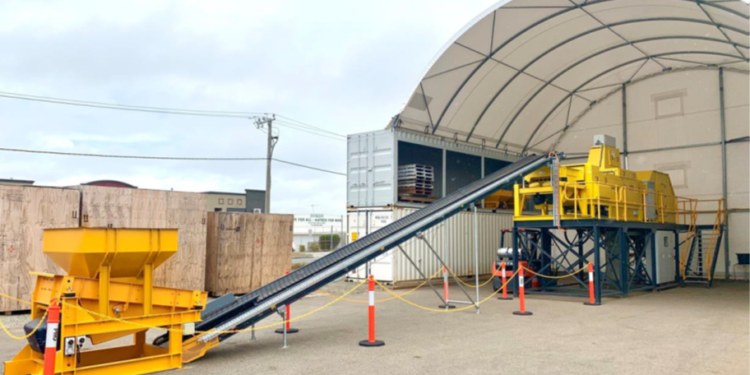American West Metals Limited (ASX: AW1) has obtained “exceptional results” from conventional ore sorting in recent ore sorting test work completed on mineralisation from the high-grade Storm Copper Project on Somerset Island, Nunavut.
This work is the first of its type to be completed on the Storm mineralisation and has successfully produced a commercial grade direct shipping ore (DSO) product. The DSO material has no impurities and has the potential to form the basis for a low footprint and low capital development option at the Storm Copper Project.
Dave O’Neill, Managing Director of American West Metals, said an extensive drilling programme has been planned for 2022 which will focus on resource definition and expansion of the known high-grade copper mineralisation through testing of high priority electromagnetic (EM) targets.
“We are pleased to announce a very exciting development for the Storm Copper Project with outstanding results from ore sorting test work,” Mr O’Neill said.
“The work has produced a commercial grade DSO product through an uncomplicated and low-cost process that is game changing for this project and plays to our strategy of developing very low footprint operations.
“The process of generating DSO at Storm is amazingly simple and highlights our Company’s focus on generating ESG sensitive mining solutions. Storm Copper now stands out as one of the very few, and highest-grade DSO copper projects globally.
“Whilst the assay results for the drilling at the West Desert Project are imminent, our shareholders will be encouraged to see that we are also progressing high value initiatives across our portfolio.”
ORE SORTING TEST WORK
The straightforward nature of the copper mineralogy and host rocks of the Storm Copper Project indicated that it may be amenable to upgrading through beneficiation processing techniques. The ore sorting test work was completed with partners Steinert Australia at their test facilities in Bibra Lake, Western Australia. The test sample was processed using a full scale STEINERT KSS CLI XT combination sensor sorter.
Sample selection and process
The test sample was selected from preserved core from drill hole STOR1601D. This drill hole is located within the eastern 4100N Zone of the Storm Copper Project. The selected 4m interval from between 97- 101m down hole was composited and included approximately 5.5kg of core material with an average grade of 4m @ 4.16% Cu.
The test sample is considered representative of the high-grade copper mineralisation discovered at the Storm Project to date. The composite sample was crushed to a size fraction of 10-25mm, which is the optimal size range for the full-scale ore sorting equipment.
The crushed material was then washed before being processed. A minor fraction of fines was lost (~0.03kg) during crushing. A combination of X-Ray transmission and 3D laser sensors were used in the sorting algorithms given the expected density contrasts between the ore and waste.
Commercial grade DSO
Three distinct products were produced from the test work – a Very High Density material which qualifies as DSO, a High Density material and a Low Density material. The weights of each product was 0.56kg, 0.51kg and 4.4kg respectively.
Each of the products was split and samples from each were pulverized and prepared as pressed pellets for analysis.
Metal values are estimated using portable XRF and the results are tabulated below. XRF analysis of the pressed pellets is considered an accurate estimate of metal values given the composite and homogenous nature of the pellets. The grades and yield suggests that the Very High Density product is likely comprised of pure chalcocite (Cu2S) and a small fraction of waste material.
This unoptimised grade is superior to many other DSO copper products globally, and is due to the simple, monomineralic nature of the copper mineralisation.
For further information please visit: https://www.americanwestmetals.com












